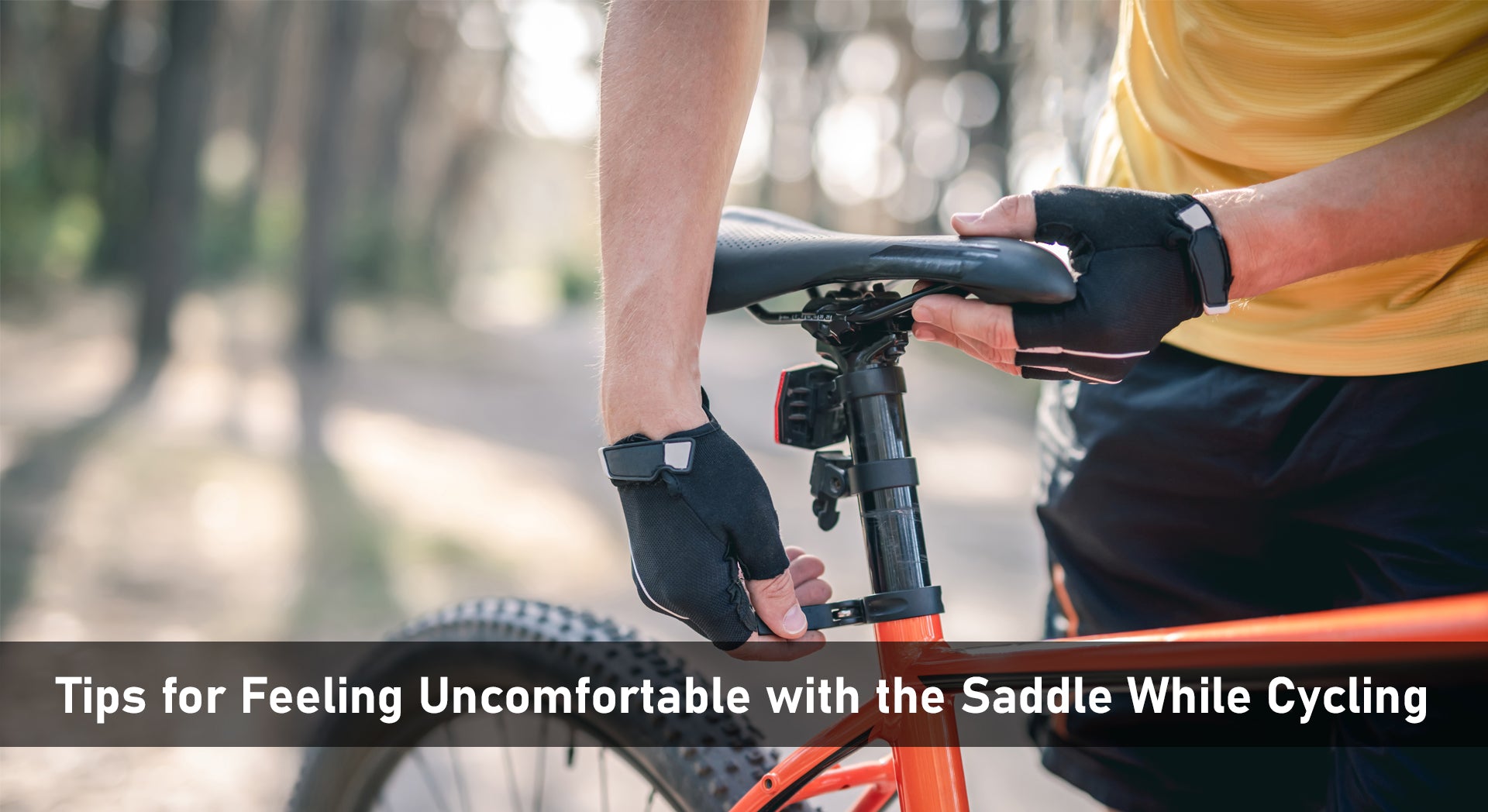Cycling is a delightful sport for many people. However, many riders may experience discomfort while sitting on the saddle during cycling, which really affects their riding experience and enjoyment.
Therefore, valuing the comfort of the saddle is one of the key factors in enhancing cycling pleasure. In order to help you improve this issue, the following are some suggestions that we hope can bring you a more comfortable riding experience.
Adjusting Riding Posture
Sometimes, changing the riding posture can also reduce the pressure on the saddle. Sitting on the saddle for a long time may cause bulk bone pain. Try different riding postures, such as gently swinging the waist might be helpful.
During cycling, you also can intermittently stand on the pedals to relax your body and reduce the pressure on the saddle. It can not only reduce discomfort, but also improve blood circulation and alleviate fatigue caused by long-term cycling.
Wear Appropriate Cycling Pants
Choosing suitable cycling pants is also an effective way to ease discomfort when sitting on the saddle. Professional cycling pants have special designs that provide additional support.
These pants are made of comfortable and breathable materials, and their built-in pads can help reduce the pressure on the sitting bones and the pain that may occur in the buttocks during cycling. It reduces friction between the sitting bones and the saddle. Additionally, it can provide better shock resistance, thereby improving cycling comfort.
Rest and Relaxation
If cycling for too long, it may cause fatigue and pain in the buttocks muscles. Taking appropriate rest and relaxation during cycling can alleviate muscle fatigue and alleviate pain. Long term cycling may cause discomfort in the saddle. It is advisable to reduce cycling time appropriately to provide the body with ample rest and recovery opportunities.
Adjusting Sitting Posture
The correct riding posture is essential for reducing discomfort in the saddle. Ensure that your seat height and angle are adjusted appropriately to evenly distribute weight on the ischium, allowing the ischium to correctly support body weight and reduce excessive force on the ischium.
Try adjusting your sitting posture to maintain a natural spinal curve. Be careful not to lean too forward or backward, and maintain a relaxed riding posture. Riding in the correct posture can reduce pressure on the saddle. Ensure that the position of the ischium in contact with the saddle is correct and avoid prolonged exposure to the same position.
Adjusting the Height and Angle of the Saddle
The appropriate saddle position and height are also very important. A saddle that is too high or too low can increase pressure on the knees and waist, while an improper angle of the saddle may cause the rider to slide continuously during cycling.
Ensure that the height and angle of the saddle are suitable for your height and riding habits, so that your knees are not excessively bent or stretched, which helps reduce pressure on your hips and legs. Try tilting the saddle slightly forward or backward, or adjusting it up and down to find the most suitable saddle angle while ensuring comfort.
The appropriate height of the saddle can reduce the pressure on the ischium and improve cycling comfort. Adjust the height and tilt angle of the saddle appropriately to ensure even contact between the saddle and the buttock, and avoid excessive pressure on specific areas.
Replace the Saddle
For some riders, the original saddles may not be suitable for their body. Everyone has different body shapes and habits, so choosing the right saddle for oneself is vital. The hardness, shape, and material of the saddle can all affect comfort.
Try different types of saddles, consider your own needs, and choose material and shape that is more suitable for yourself. For example, some saddles adopt ergonomic design, which can better adapt to the body curves of cyclists and reduce discomfort. Besides, some saddles support the installation of shock absorbers, which can effectively reduce discomfort caused by saddles in more complex road conditions.
Adaptive Training
When you change the saddle or adjust your riding posture, give your body some time to adapt to the changes. Sometimes, the body needs time to adapt to new riding styles and gradually reduce discomfort in the saddle.
If you feel uncomfortable when starting to use the saddle, you can do some adaptive training. For example, you can start with a shorter cycling distance and lower cycling intensity, gradually increasing the cycling distance and intensity, allowing the body to gradually adapt to the shape and hardness of the saddle.
In addition, strong hip muscles can better withstand the pressure of cycling and reduce discomfort in the saddle. Cyclists can strengthen their hip muscles through some simple exercises. For instance, hip muscle exercises such as squats and hard pulls can be performed before and after cycling.
Regular Maintenance
Regularly inspect and maintain your cycling equipment, including the saddle. Ensure that the surface of the saddle is clean, and replace aged or damaged saddles in a timely manner to maintain optimal comfort and support.
Apart from that, maintaining personal hygiene can prevent bacterial infections and skin problems. After each cycling, it is important to clean your riding pants promptly and avoid sitting around after soaking them in sweat.
Riding E-Bike
The e-bike has an electric power assist function. Compared to regular bicycles, using e-bikes for cycling can reduce the frequency and intensity of pedaling through electric assistance. It also means that e-bike can make it easier for people to ride or cope with uphill roads without excessive physical exertion, reduce fatigue, and improve cycling comfort.
From this, we can see that e-bikes have reduced the burden on people's daily cycling. People can also adjust their riding and sitting postures more conveniently with the help of e-bikes. Incorrect sitting or riding posture may cause discomfort when sitting on a saddle.


YOSE POWER has different kinds of e-bike conversion kits. By converting traditional bicycles into electric bicycles, the lifespan of bicycles can be extended, the impact on the environment can be reduced, and sustainable travel can be promoted. It not only saves costs, but also allows you to enjoy the basic function of e-bike, which is to assist in cycling.
If you want to reduce the discomfort of the saddle during cycling, it is recommended to start from the above aspects. Also if you would like to know the detailed info of these kits from YOSE POWER, please check out at https://yosepower.com and the coupon code: yua10 is available for use.
Pay attention to body signals and adjust them in time, making cycling a pleasure rather than a burden.


Share:
Here Comes Your New Cycling Partner
Exploring the Advantages of Group Cycling